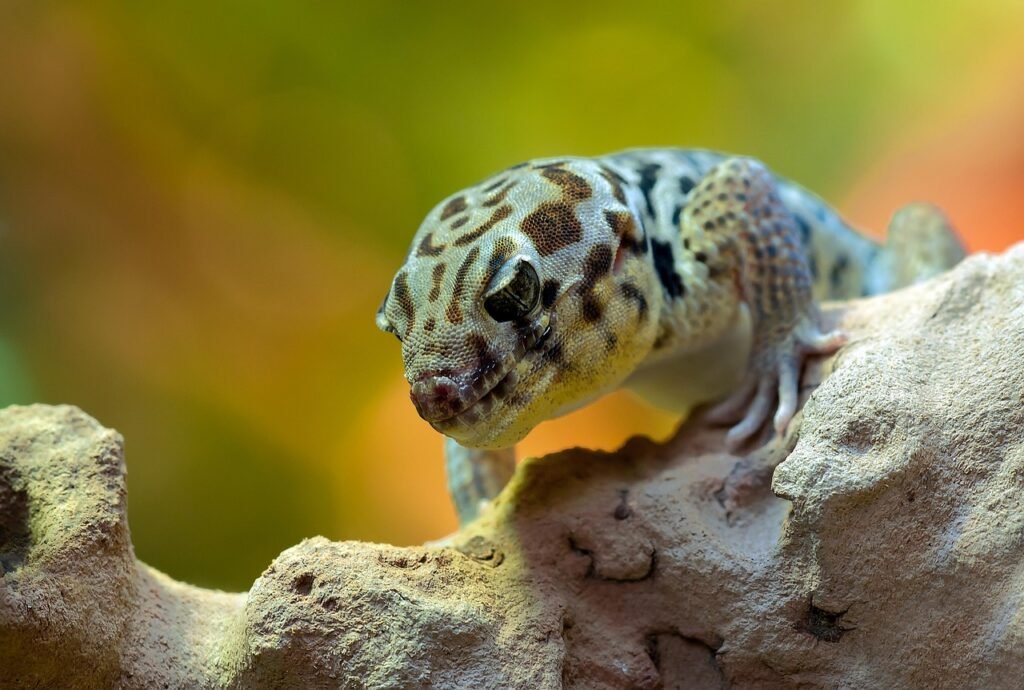DD Doggodigest – For decades, scientists believed reptiles were mostly visual and scent-driven animals, with little need for sophisticated hearing. But it turns out geckos have been quietly listening in on the world — through their bones.
A new study, published in Current Biology, reveals that the tokay gecko, a loud-mouthed lizard known for its bark-like call, can detect ground-borne vibrations using an unexpected sensory system: the same organ in the inner ear that helps them balance.
A Tail-Tapping Discovery

Researchers studying tokay geckos (a species common in Southeast Asia) found that the saccule — a fluid-filled sac in the inner ear — lights up when the animal is exposed to low-frequency vibrations between 50 and 200 Hz. These are the kinds of rumbles you feel more than hear, and they fall below the gecko’s regular eardrum hearing range.
“This ancient inner pathway, which is typically linked to balance, helps geckos detect vibrations that travel through media such as ground or water,” said study co-author Catherine Carr, a professor of biology at the University of Maryland. “This pathway exists in amphibians and fish, and now it has been proven to be preserved in lizards as well. Our findings shed light on how the auditory system evolved from what you see in fish to what you see in land animals including humans.”
Two Paths to Sound

While your dog might hear a chip bag open from two rooms away, geckos operate on a dual system: one channel for airborne sounds and another for vibrations beneath their feet. The team found that the saccule sends signals to a specific part of the brain — the nucleus vestibularis ovalis — which handles vibration detection. This brain pathway appears completely separate from the one used for traditional hearing.
This wasn’t just a gecko quirk. Similar brain structures were found in snakes and even in the tuatara, an ancient New Zealand reptile. That points to a shared ancestral feature — one that might have been hiding in plain sight.
Why It Matters
This “hidden sense” gives new meaning to how reptiles communicate and stay alert in their environments. Tokay geckos might detect the tremble of a predator’s footsteps or the movement of potential prey in the soil. Burrowing reptiles, like sand-dwelling skinks or nest-bound turtle hatchlings, may rely on these low vibrations to interact with their surroundings.
“The implications of this research extend beyond the world of reptiles,” said lead researcher Dawei Han. “As we uncover these hidden mechanisms, we’re also gaining a richer and more nuanced picture of how animals perceive and interact with their environments – and potentially, new insights into our own sensory experiences.”
A Human Connection?

It turns out this vibration sense may not be unique to reptiles. At loud rock concerts, for example, we don’t just hear the music — we feel it in our chest and bones. That sensation could mean our own vestibular system (the part of our inner ear that handles balance) is helping us experience sound in more ways than we realize.
Carr says this overlap could lead to new insights into human hearing, balance disorders, and even future sound technology inspired by the gecko’s vibration-sensitive inner ear.
So the next time you feel your dog’s paws tapping along to a low rumble or your cat twitches to a quiet thud — remember, they might be hearing the world with more than just their ears.






